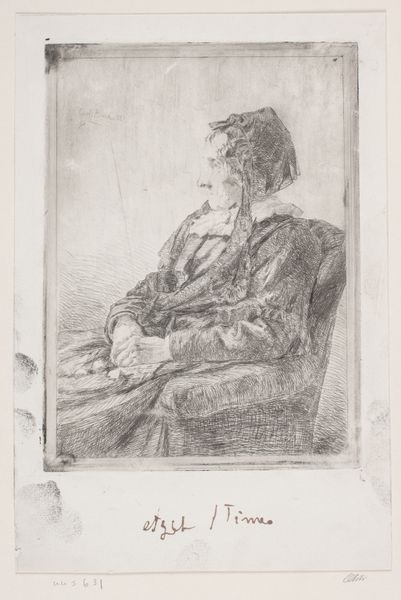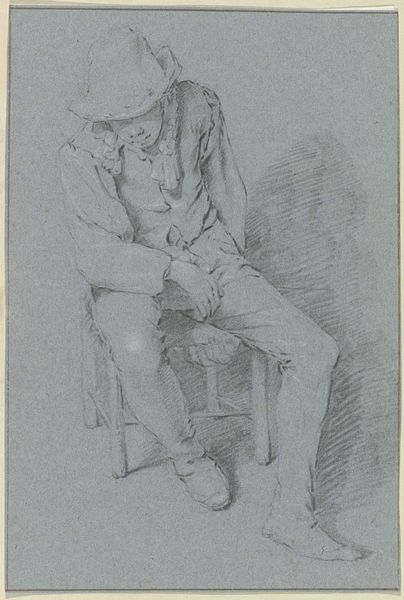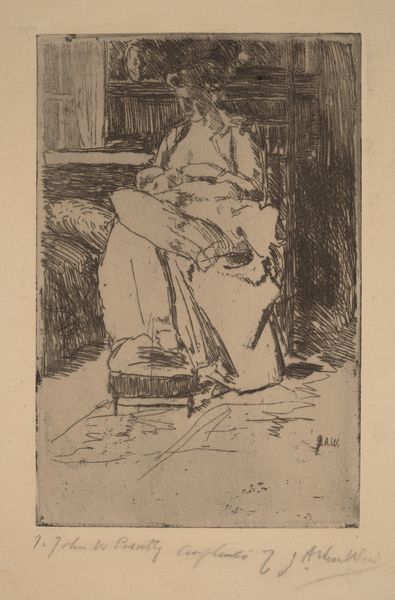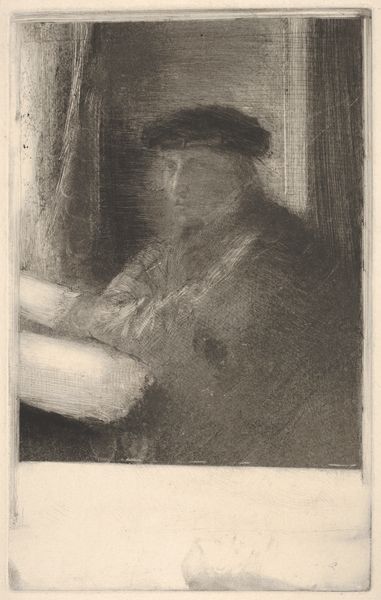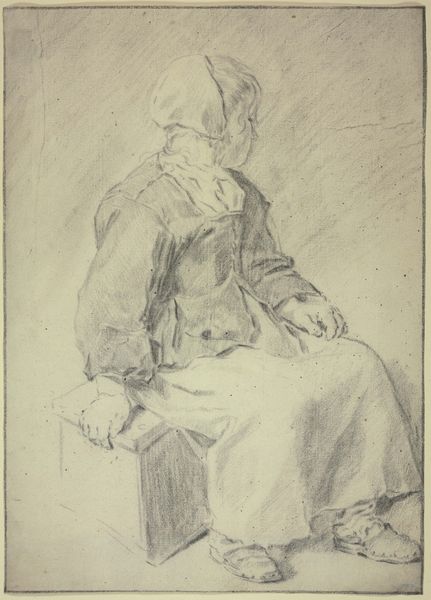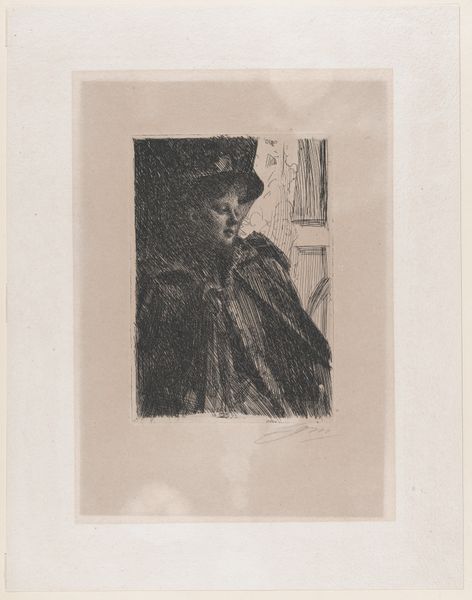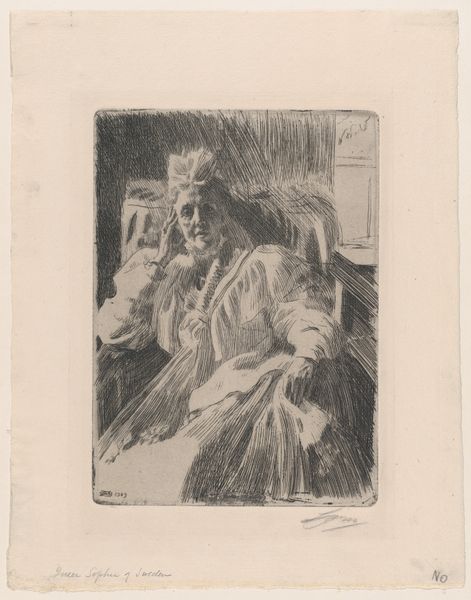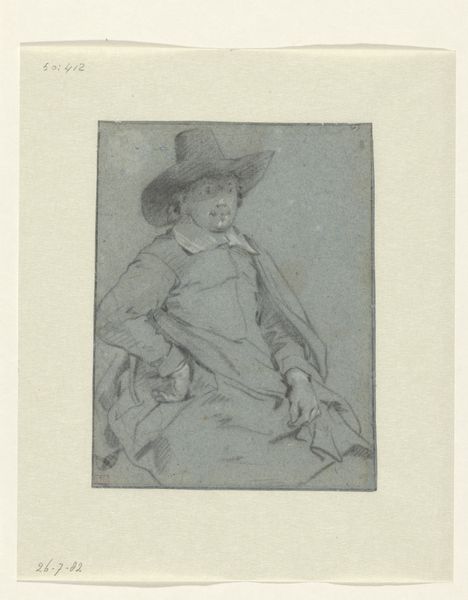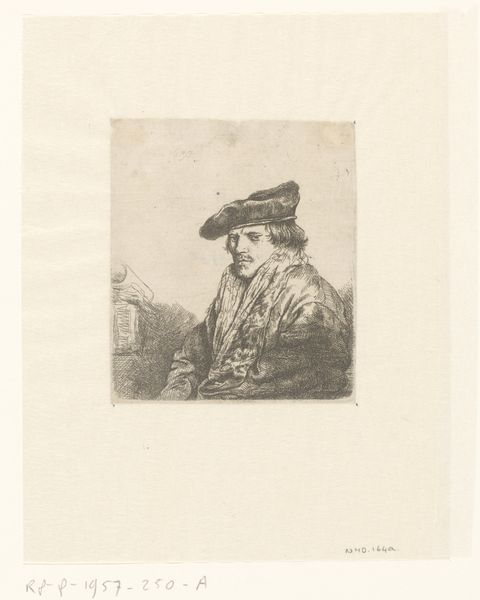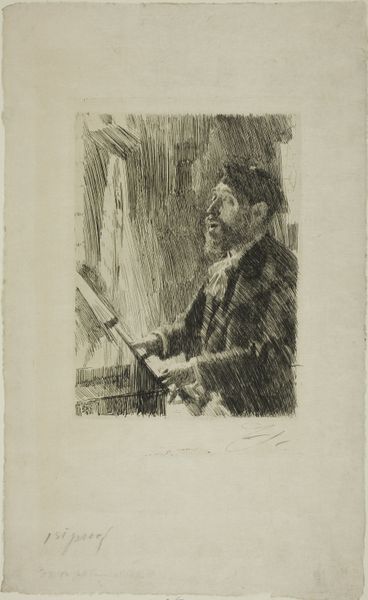
drawing, print, etching
#
portrait
#
pencil drawn
#
drawing
# print
#
impressionism
#
etching
#
pencil sketch
#
pencil drawing
Dimensions: plate: 30.96 × 22.07 cm (12 3/16 × 8 11/16 in.)
Copyright: National Gallery of Art: CC0 1.0
Editor: Here we have Mary Cassatt’s etching, "The Corner of the Sofa (No. 3)" from around 1879. The soft, hazy textures create an intimate and somewhat melancholic mood. What do you see in this piece? Curator: The hazy effect comes from her choice of printmaking, etching, which leaves room for evocative tonal depth not captured the same way in other methods. I see Cassatt working in the legacy of portraiture while cleverly disrupting its conventions by creating a very domestic portrayal. Traditionally, portraits are about public persona, and the sitter displays themself as a social subject; yet, we find ourselves in an un-staged moment of candid repose, the symbolism of dress relaxed into feelings of ease. I’d ask you, what emotions arise when you think of the portrait, and its connection to a sitter’s social role? Editor: I guess the directness is surprising - like catching a glimpse of something private. She looks like she is turning inward, maybe even slightly bored. The etching almost feels incomplete or like a first draft because it doesn’t resolve fully. Curator: And so the intimacy blossoms… it’s the ‘unfinished’ quality that amplifies the idea that the moment isn’t prepared for an audience, the same way our own private moments rarely are. Consider that this print exists in multiple states; Cassatt reworked the plate, adding more lines and depth over time, moving the symbolism towards resolution and completion, or towards an unfinished truth as you called it. The cultural memory embedded here invites viewers into a conversation about public versus private self. Do we know this woman any better because the portrait isn’t cleaned and polished to perfection? Editor: I see your point. It almost seems more genuine because of that intimacy you described. It is almost voyeuristic and much more relatable! Curator: Exactly. The work becomes a meditation on selfhood and interiority, made all the more powerful by its accessibility and subtle disruption of the established portrait tradition. Editor: I hadn't considered the cultural implications of the "unfinished" style before. This makes me look at the work, and really her entire artistic approach, in a fresh, nuanced light!
Comments
No comments
Be the first to comment and join the conversation on the ultimate creative platform.

